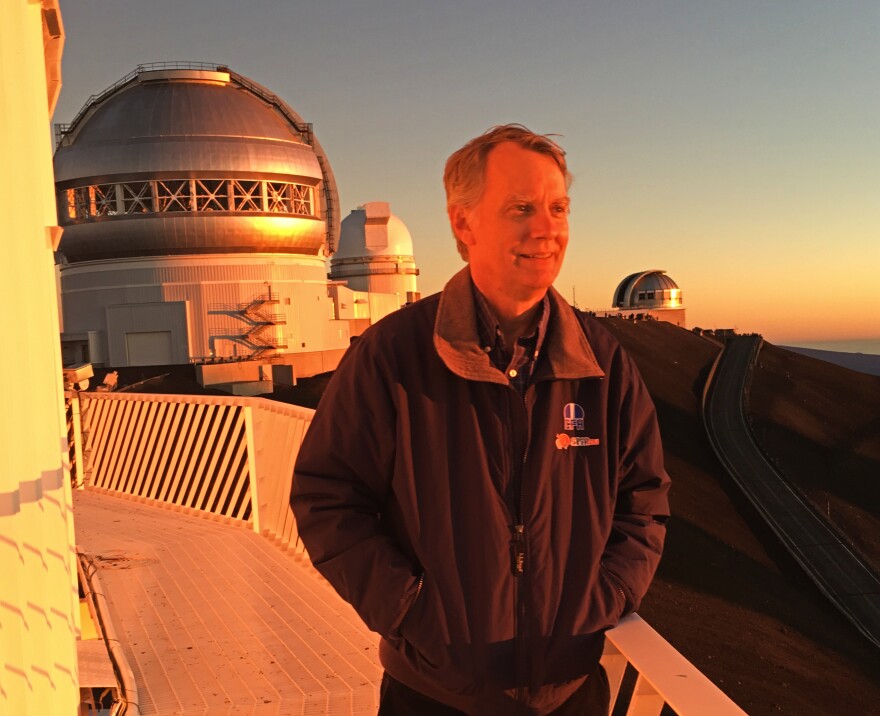A lot has changed in astronomy since Hawai?i astronomer Doug Simons began his career more than 30 ago. And a lot has changed on the mountain. Now he’s working to ensure the next generation has the same opportunities that he had.
In May, before the Mauna Kea Access Road was blocked by protesters, Simons invited HPR on a tour of one of the Mauna Kea Observatories. The 56-year-old Simons doesn’t make the trek up to Mauna Kea as frequently as he’d like to.
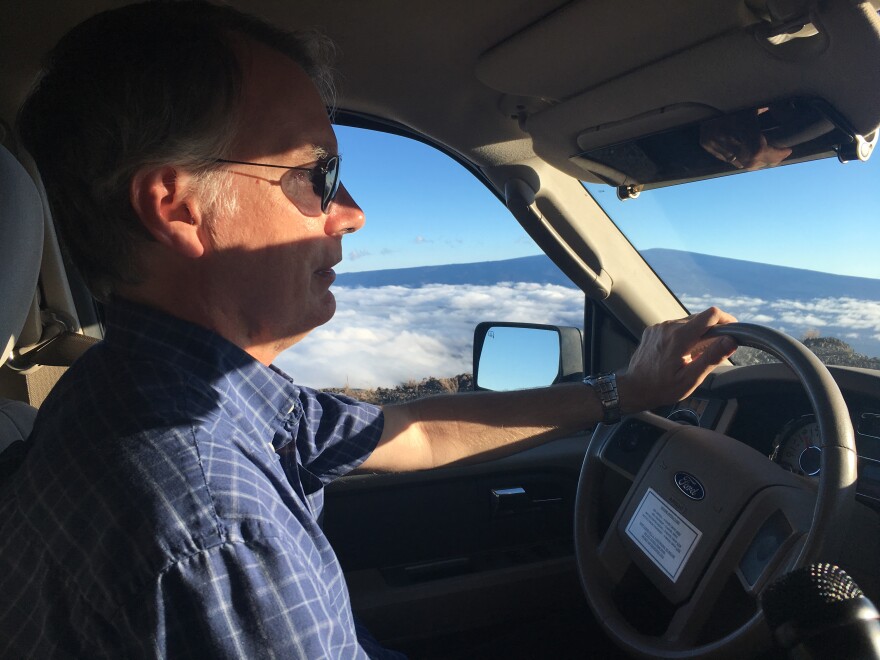
"It's just incredible to think that Hawaiians for hundreds of years came up without Ford Expeditions," jokes Simons.
The Florida native and University of Hawai?i astronomy graduate names the telescopes he’s worked on as we wind our way up to the summit.
“The newly-refurbished UH 2.2 meter...did a lot of my graduate work on that. Here’s good old Gemini...so I spent 18 years of my career on that,” says Simons. “Tonight you’ll see all the telescopes open up. It’s kinda fun to see them come to life.”

At the end of the road is the Canada-France-Hawai?i Telescope, one of the first built on the mountain. Simons is the director here.
We walk to the entry, and there is frost on the ground.
“The last snow of the winter next to our door. We saved some for ya. You don’t get that too often in Honolulu,” said Simons.
We enter the dome until we reached the control room, which Simons says is empty most nights. The multi-million dollar telescope is operated remotely from Waimea. A far cry from Simons’ graduate school days.
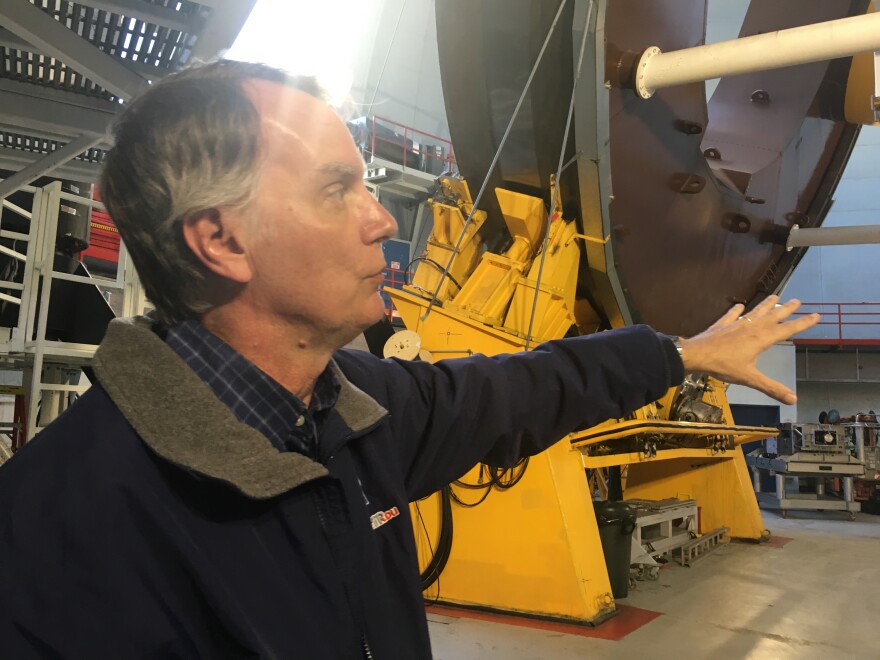
“I literally had 3x5 cards and coordinates on pencil and you go and sort of shake the telescope operator at three in the morning and say, 'OK, we gotta go over here,'” says Simons. “And now the computer is entirely pre-programmed for the night.”
Simons says by the next day, astronomers are able to access data on what was observed from anywhere in the world via the internet.
“So let’s see, would you like to see the telescope?” asks Simons.
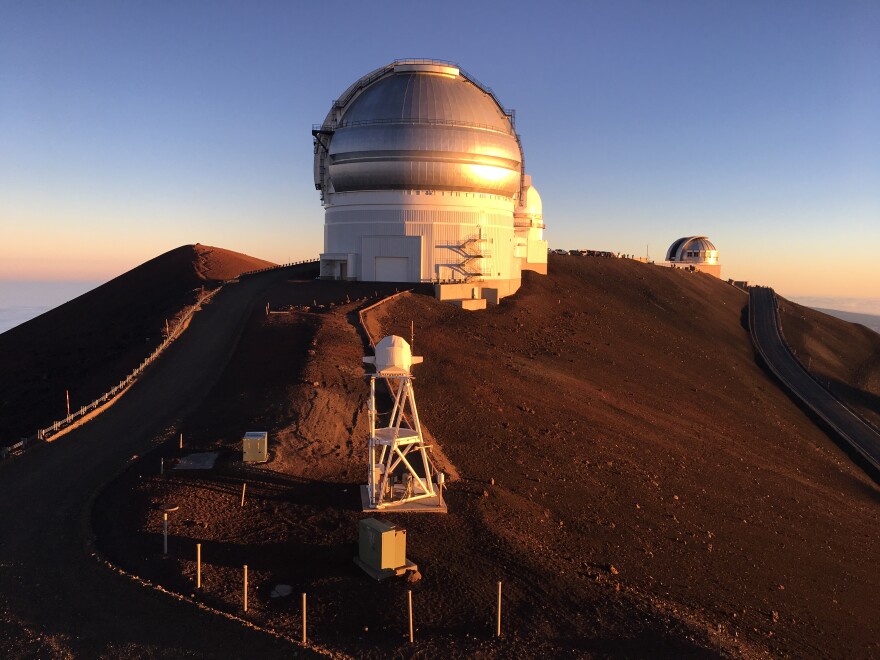
The dome opens to the sky and it's massive.
“Yeah, so this is about 30 meters across, and about the same size dome as Gemini or Keck,” says Simons. “And they are exercising everything make sure it’s behaving itself. They’re probably also showing off. They know the director’s up here with a journalist.”
You can understand why Simons wants students to experience this.
“I see kinda the terrain in front of me as one in which my biggest contribution can be to make sure that those in the next generation have the opportunities that I have and more,” says Simons.
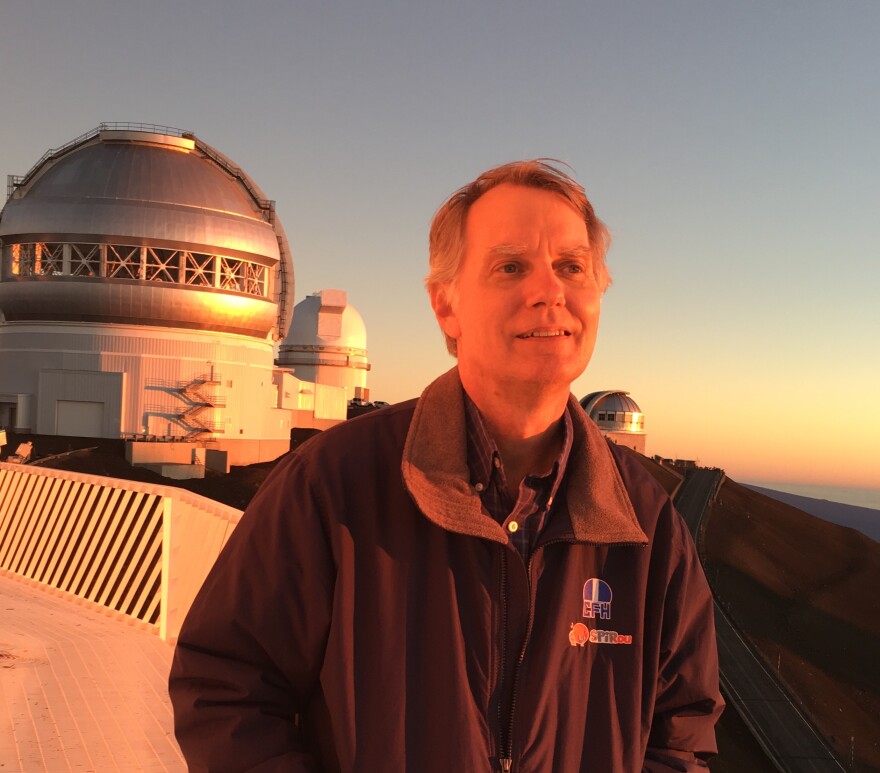
The observatories have developed programs for local high schoolers and college students to expose them to astronomy and the telescopes on Mauna Kea. About 100 graduates of the university program now work in science fields in the state.
“For me, this is incredibly satisfying to see our community be able to use and do reserach on the most powerful telescopes literally in the world,” says Simons.
Simons doesn’t know how the unrest on Mauna Kea will play out but he hopes that Hawai?i students will continue to have a place on the mountain.


